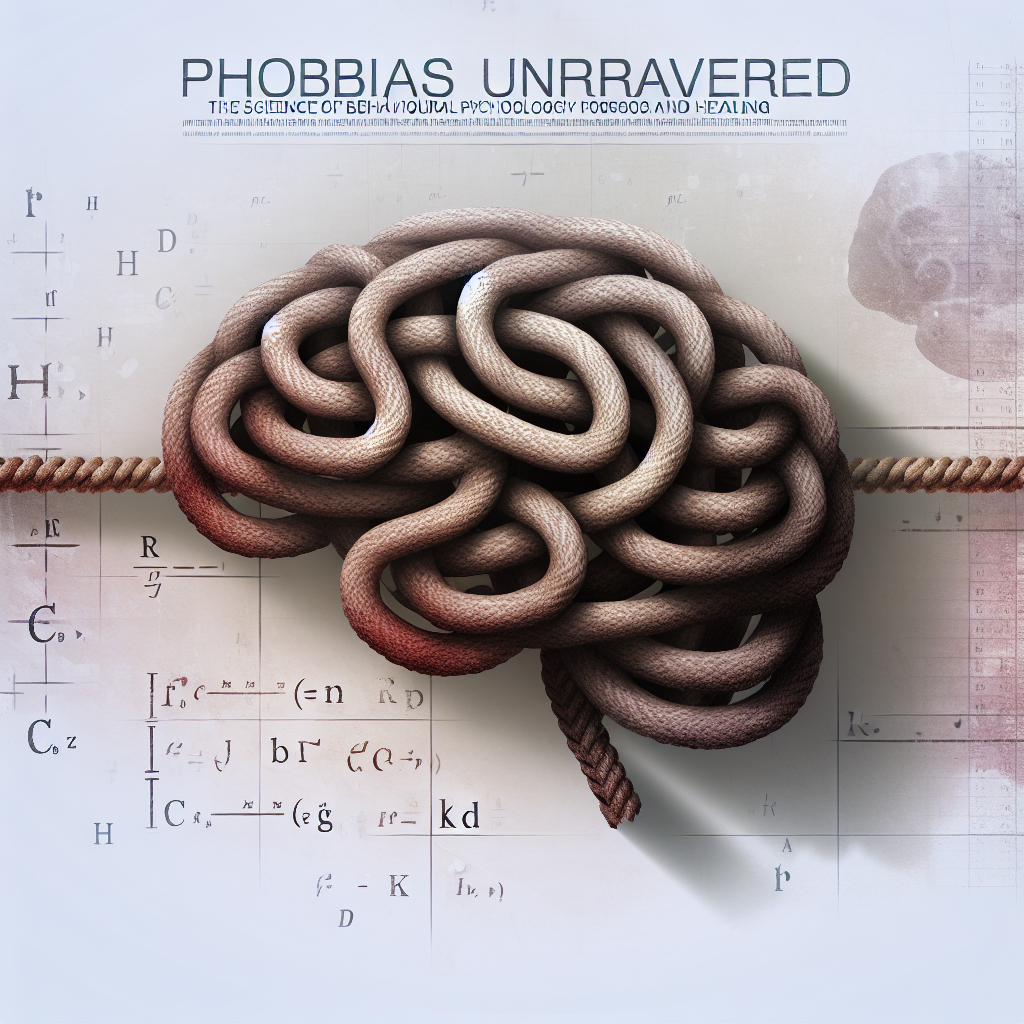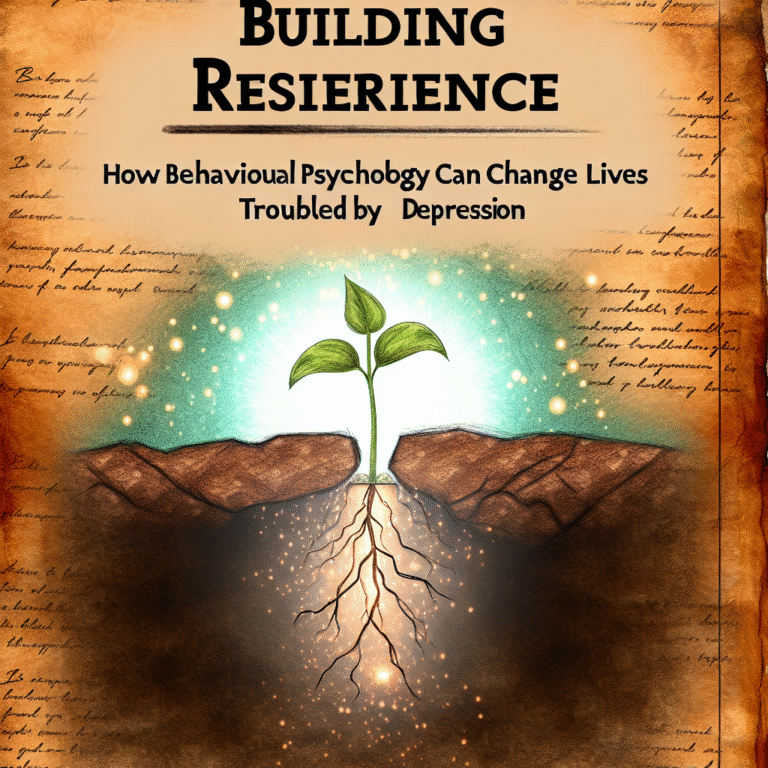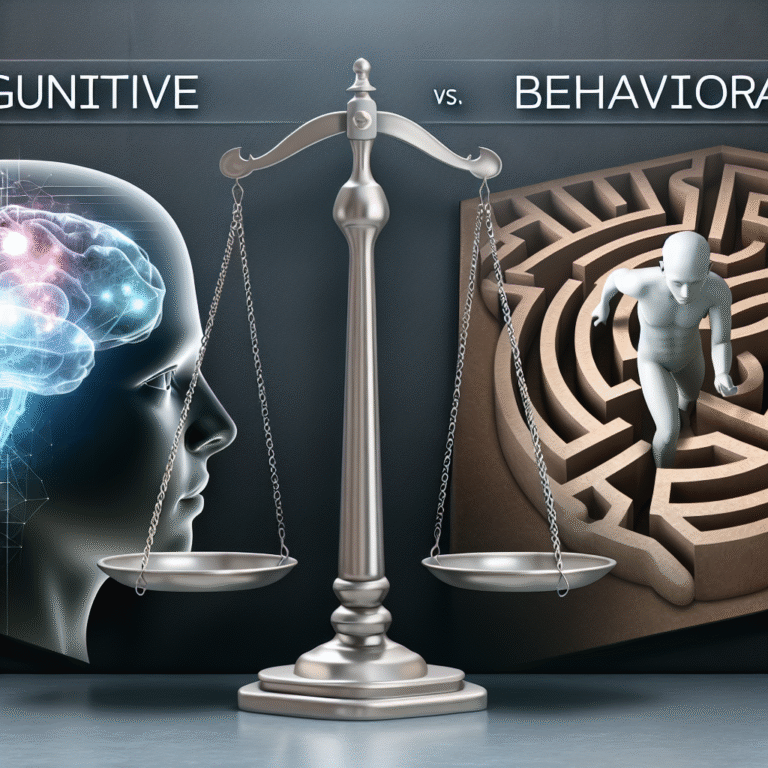
Phobias Unraveled: The Ultimate Science of Behavioral Psychology and Healing
Introduction: Facing Our Fears
Imagine standing on the edge of a sky-high ledge, your heart pounding, palms sweating, and a mind racing with the thought, What if I fall? This overwhelming fear isn’t just a figment of a wild imagination; it’s a phobia—a very real psychological condition that affects millions around the globe. Understanding phobias is crucial, not only for those who experience them but for society as a whole. In this article, we will explore Phobias Unraveled: The Science of Behavioral Psychology and Healing. It will be an eye-opening journey into how these powerful fears manifest, how behavioral psychology seeks to understand them, and the proven methods to heal and conquer them.
What Are Phobias?
Simply put, phobias are intense, irrational fears of specific objects, situations, or activities. Unlike general anxiety, phobias provoke immediate fear responses and can significantly impact daily life. The National Institute of Mental Health estimates that around 19 million adults in the United States suffer from at least one phobia.
Types of Phobias
- Specific Phobias: These involve a particular object or situation, such as heights (acrophobia), spiders (arachnophobia), or flying (aviophobia).
- Social Phobia: This pertains to the fear of social situations, fearing embarrassment or judgment from others.
- Agoraphobia: This is the fear of situations where escape might be difficult or help unavailable—often leading to avoidance of public spaces.
The Psychological Roots of Phobias
Understanding the origins of phobias is essential to unraveling their intricacies. Behavioral psychology plays a crucial role in decoding these fears.
Behavioral Conditioning
One prevalent theory posits that phobias stem from classical conditioning. The famous Little Albert experiment demonstrated how a child could be conditioned to fear a white rat through a series of paired experiences involving loud, frightening noises.
Observational Learning
Humans are also influenced by their environments. If a child witnesses a parent exhibit a fear of, say, dogs, they may adopt the same fear through observational learning. This idea becomes particularly relevant in cases of social phobias.
Case Study: Overcoming Arachnophobia
Background: Sarah, 28 years old, experienced paralyzing fear at the mere sight of a spider. Her phobia became so debilitating that she avoided outdoor activities altogether.
Intervention: Through cognitive-behavioral therapy (CBT) and gradual exposure, she confronted her fear step-by-step, starting with pictures and eventually working her way to real spiders.
Outcome: Within six months, Sarah reported a significant reduction in her fear level, stating she could calmly observe spiders and was no longer avoiding outdoor activities.
Relevance: This case illustrates how behavioral psychology techniques can effectively manage phobias, empowering individuals to reclaim their lives.
Healing Approaches in Behavioral Psychology
Understanding phobias leads us to the essential part: healing. Phobias Unraveled: The Science of Behavioral Psychology and Healing offers various strategies.
Cognitive-Behavioral Therapy (CBT)
CBT is a robust evidence-based treatment aimed at changing negative thought patterns. Studies show that approximately 70% of patients see an improvement.
Key Components of CBT
| Component | Description |
|---|---|
| Exposure Therapy | Gradual exposure to the fear source |
| Cognitive Restructuring | Challenging and changing negative thoughts |
| Coping Strategies | Developing skills to manage anxiety |
Mindfulness and Relaxation Techniques
Mindfulness practices, such as meditation and yoga, have shown promise in helping individuals manage symptoms of anxiety that accompany phobias.
Medication
In severe cases, medication may be prescribed to manage symptoms temporarily while therapy is undertaken. Common options include SSRIs and benzodiazepines.
Case Study: Social Phobia
Background: John, 34 years old, found himself avoiding social gatherings due to intense feelings of shyness and inadequacy.
Intervention: Through group therapy and behavioral experiments, he gradually exposed himself to social situations, engaging in conversations and building social skills.
Outcome: John reported that his anxiety levels decreased significantly, and he could enjoy social gatherings without dread.
Relevance: John’s journey underscores the importance of support systems and practical exposure strategies in the healing process.
The Role of Support Systems in Healing
Support from friends, family, or therapy groups is vital. It enhances the healing process and fosters a sense of community, making individuals feel less isolated in their struggles.
Building a Support System
- Encourage Open Dialogue: Discuss fears openly with trusted individuals.
- Participate in Support Groups: Healing can be profoundly influenced by shared experiences.
- Professional Guidance: Working with a therapist can help establish coping strategies.
Conclusion: The Road Ahead
Understanding phobias is a journey—one filled with challenges, but also with the promise of healing and empowerment. Through Phobias Unraveled: The Science of Behavioral Psychology and Healing, we gain insight into the mechanisms behind these fears and the effective methods available to overcome them.
The path may not always be easy, but each step taken towards understanding and confronting our fears is a victory. If you or someone you know struggles with a phobia, remember: help is available, and healing is possible.
FAQs
1. What triggers phobias?
Phobias can be triggered by various factors, including traumatic experiences, learned behaviors from others, or genetic predispositions.
2. How do I know if I have a phobia?
If you experience intense, irrational fear of a specific object or situation that disrupts your daily life, you may have a phobia. Consulting a mental health professional can provide clarity.
3. Can phobias be cured?
While phobias may not be "cured" in the traditional sense, effective treatments like CBT can reduce symptoms significantly, allowing individuals to lead fulfilling lives.
4. How long does treatment usually take?
Duration varies based on the individual and severity of the phobia. Some may see improvement in weeks, while others may take months.
5. Are there self-help techniques for phobias?
Yes! Techniques like journaling your fears, practicing mindfulness, and gradually exposing yourself to the feared object or situation can be beneficial.
By venturing into the depths of phobias, we not only enlighten ourselves but also empower those around us to confront and embrace their fears. Phobias Unraveled: The Science of Behavioral Psychology and Healing is the gateway to understanding and overcoming these paralyzing barriers to our well-being.
















